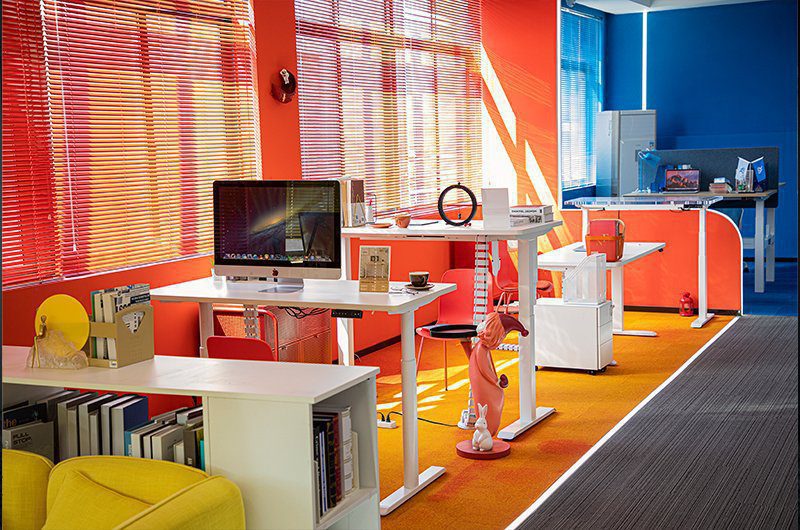In today’s sedentary work culture, where many of us spend long hours at a desk, the importance of ergonomics cannot be overstated. An ergonomic desk isn’t just a piece of furniture; it’s a tool designed to promote comfort, productivity, and overall well-being. But what exactly makes a desk ergonomic? Let’s delve into the key elements that define the understanding ergonomic desks and how they contribute to a healthier and more comfortable workspace.

- Adjustable Height: One of the fundamental features of an ergonomic desk is adjustable height. This allows users to customize the desk’s height to their specific needs, ensuring proper alignment of the body and reducing strain on the neck, shoulders, and back. Whether sitting or standing, the desk height should be easily adjustable to promote optimal posture and comfort throughout the day.
- Keyboard and Mouse Tray: A well-designed ergonomic desk often includes a keyboard and mouse tray that can be adjusted to the ideal height and angle for typing and mouse use. This helps prevent wrist strain and carpal tunnel syndrome by maintaining a neutral wrist position and reducing awkward bending or reaching motions.
- Monitor Placement: Proper monitor placement is essential for reducing eye strain and neck discomfort. An ergonomic desk should allow for easy adjustment of the monitor height and distance to ensure that the top of the screen is at or slightly below eye level, with the screen positioned directly in front of the user to minimize head and neck movement.
- Desktop Surface Area: Sufficient desktop surface area is crucial for accommodating all necessary work tools and accessories without causing clutter or congestion. An ergonomic desk should provide ample space for the computer, monitor(s), keyboard, mouse, documents, and other items, allowing users to organize their workspace efficiently and maintain good ergonomic posture.
- Cable Management: Messy cables not only detract from the aesthetics of the workspace but can also pose tripping hazards and impede movement. An ergonomic desk should incorporate cable management features such as cable trays, channels, or grommet holes to keep wires organized and out of the way, promoting a clean and safe work environment.
- Stability and Durability: A stable and durable desk is essential for ensuring safety and longevity. Look for desks constructed from high-quality materials such as steel or aluminum, with a solid base and minimal wobbling even when fully loaded. A sturdy desk provides a reliable foundation for work activities and reduces the risk of accidents or injuries.
- Ergonomic Accessories: In addition to the desk itself, ergonomic accessories such as monitor arms, adjustable chairs, footrests, and task lighting can further enhance comfort and support in the workspace. These accessories should complement the desk’s ergonomic design and be easily integrated to create a cohesive and ergonomic workstation setup.
- User-Friendly Design: An ergonomic desk should be intuitively designed and easy to use, with smooth adjustment mechanisms and clear instructions for setup and customization. User-friendly features such as programmable height presets, quick-release levers, and tool-free assembly can streamline the user experience and encourage regular adjustment for optimal comfort.
- Health Benefits: Ultimately, the primary goal of an ergonomic desk is to promote the health and well-being of the user. By reducing the physical strain associated with prolonged sitting or improper posture, an ergonomic desk can help prevent musculoskeletal disorders, improve circulation, and enhance overall productivity and job satisfaction.
In conclusion, a desk is more than just a piece of furniture—it’s a critical component of a healthy and productive workspace. An ergonomic desk incorporates adjustable height, keyboard and mouse trays, proper monitor placement, ample desktop surface area, cable management, stability and durability, ergonomic accessories, user-friendly design, and health benefits to create a workspace that supports comfort, productivity, and well-being. By investing in an ergonomic desk and prioritizing ergonomic principles in the workplace, individuals can create a workspace that fosters health, happiness, and success.
